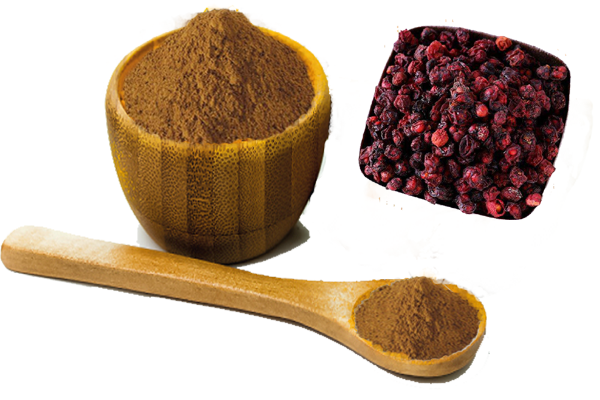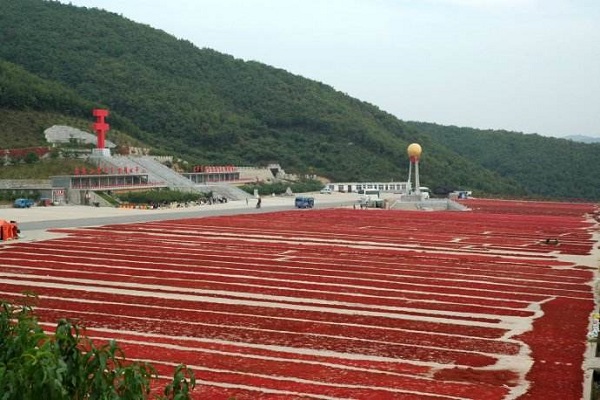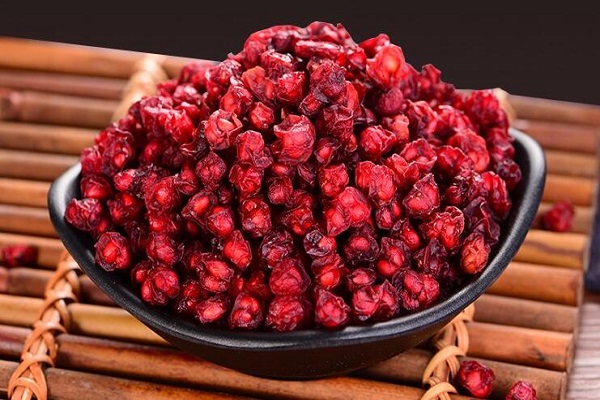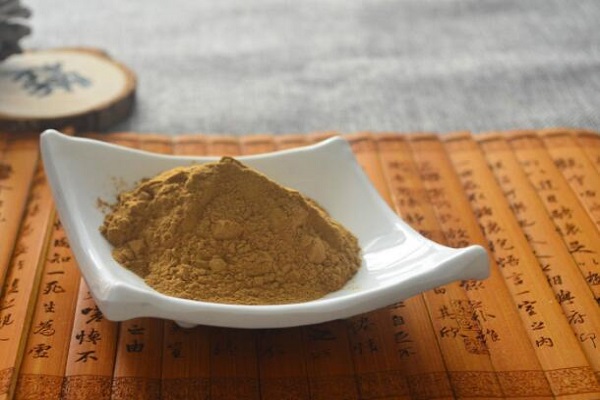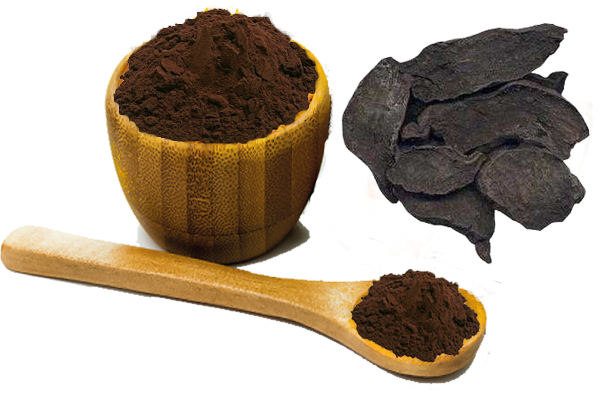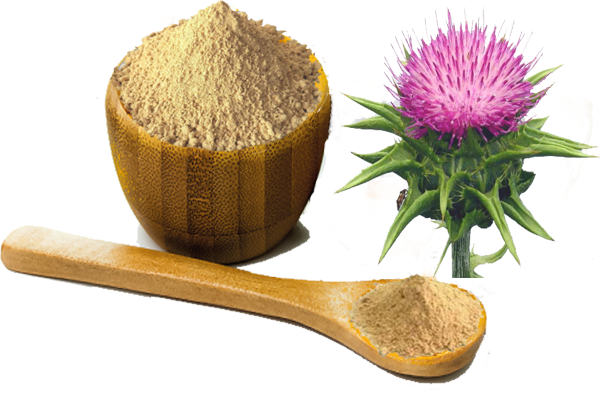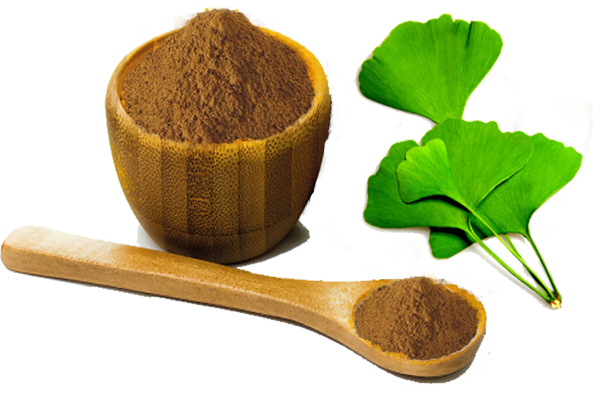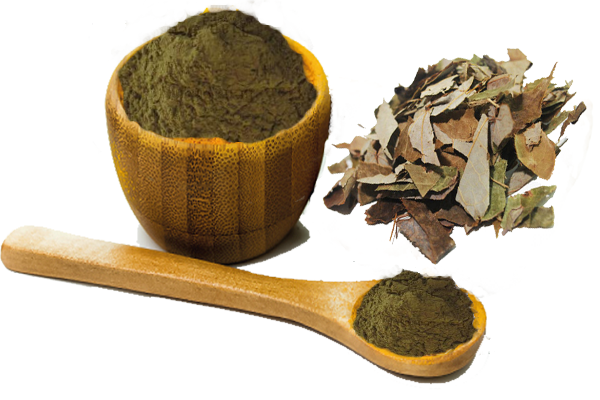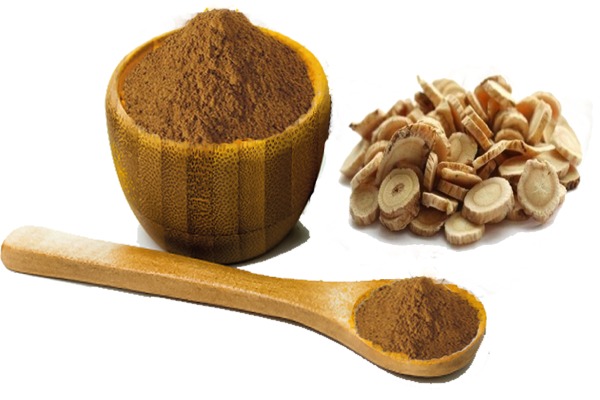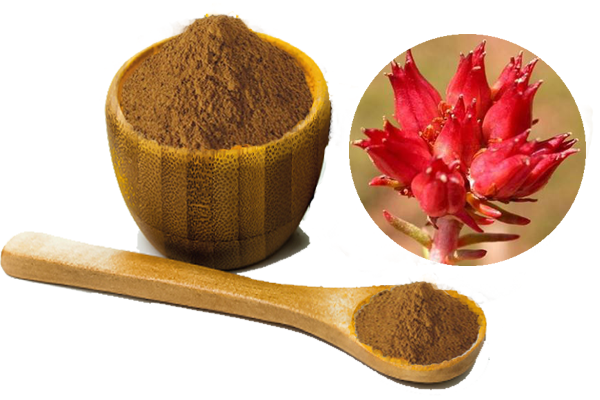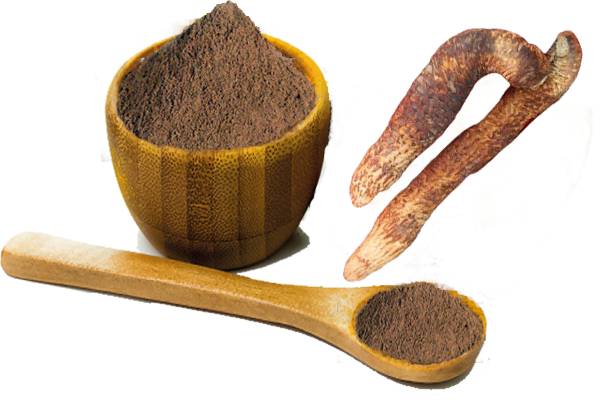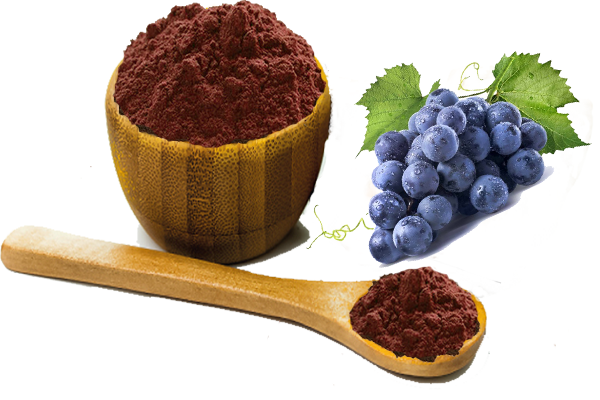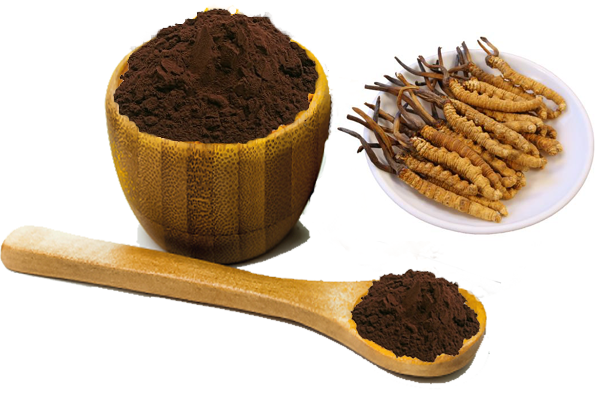
Schisandra Chinensis Extract
Schisandra Chinensis Extract
Schisandra Chinensis Extract schizandrins 1%~9%, schisandra monomer, concentrated extract 10:1, 20:1, 30:1 with analysis meets the EP, USP, JP, CP.....
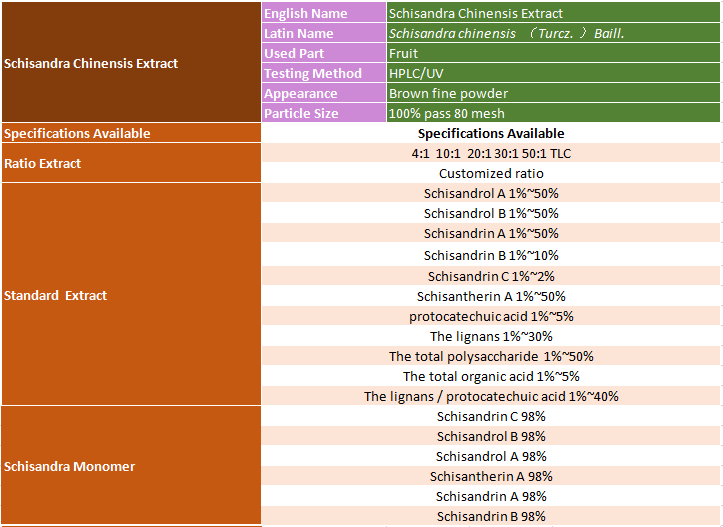
Schisandra Chinensis Extract Specification
Schisandra Chinensis Extract General Information

Schisandra Chinensis Extract
Characteristic and current data on chemical composition
The amounts of dibenzocyclooctadiene lignans in the fruits of S. chinensis are influenced by the degree of fruit maturity, harvest time, the habitat and its location. These amounts vary over a wide range, from 4 to 19 g % DW (European Pharmacopoeia 8.0 2013; Opletal et al. 2004; World Health Organization 2007). Data from 2007, included in the WHO monograph, referred to the presence in the fruits of S. chinensis of thirty compounds from this group. The earliest dibenzocyclooctadiene lignans to be identified, and found to occur in the largest quantities in the fruits, were: schisandrin, schisandrins B and C, γ-schisandrin, schisantherins A and B, schisanthenol, deoxyschisandrin, gomisins A and G. These compounds have a number of synonymous names that are collected in Table 2 (Ikeya et al. 1979; Kochetkov et al. 1961; Opletal et al. 2004; World Health Organization 2007). The latest studies report on newly identified structures from this group of lignans, which have been given the name schisanchinins A–D (Hu et al. 2014), and the first example of naturally occurring N-containing lignan featuring a nicotinoyl group—nicotinoylgomisin (Shi et al. 2014b). In addition, other types of lignans have been isolated from the fruits of S. chinensis—dibenzylbutanes lignans: schineolignans A–C, and tetrahydrofuran lignans: schinlignins A and B (Xue et al. 2010; Zhang et al. 2014b)
The fruits of S. chinensis also contain an essential oil in an amount of about 3 %. Sesquiterpenes are dominant in the essential oil. Oxygenated monoterpenes, monoterpenes and oxygenated sesquiterpenes are present in smaller quantities (about 5 %). Ylangene, β-himachalene, α-bergamotene and β-chamigrene are the main components, comprising about 75 % of the oil (Chen et al. 2011).
The most recent studies have also included analyses of the composition of different groups of polyphenols. Among the phenolic acids found in the fruits, our team has confirmed the presence of: chlorogenic, p-coumaric, p-hydroxybenzoic, protocatechuic, salicylic and syringic acids (Szopa and Ekiert 2012). Other authors have additionally proved the presence of gentisic acid (Mocan et al. 2014). The same team also confirmed the presence of compounds from the group of flavonoids: hyperoside, isoquercitrin, rutin and quercetin (Mocan et al. 2014).
Moreover, S. chinensis fruits are rich in polysaccharides and monosaccharides (glucose, fructose, arabinose and galactose), vitamins (C and E), phytosterols (stigmasterol, β-sitosterol), organic acids (citric, malic, fumaric and tartaric acids) and bioelements (Ca, Mg, Fe, Mn, B, Zn, Cr, Ni, Cu, Co) (Hancke et al. 1999; Szopa and Ekiert 2014; Tong et al. 2012).
Bioactivities and pharmacological applications for Schisandra Chinensis Extract
Schisandra Chinenisis Extract by fruit body is rich nutrion and multifunction known as a plant raw material. A lot of valuable applications of these species have been proved by scientific studies recently. Activities proved by scientific studies and pharmacological applications were described below and additionally were summarized in below:

Schisandra Chinensis Extract Purity
Hepatoprotective activity
Hepatoprotective activity is the best known profile of action of S. chinensis fruit extracts and of individual dibenzocyclooctadiene lignans. The available literature contains many reports on scientific studies that confirm these properties of the fruit extracts. The most recent ones concern detailed studies on the mode of action of individual lignans. For example, the mechanism of action of gomisin A has been studied. It has been shown that it increases the microsomal activity of: cytochrome B5, P450, NADPH cytochrome C reductase, N-demethylase aminophenazone, 7-ethoxycoumarin O-deethylase, and reduces the activity of 3,4-dibenzopyrene hydroxylase. It also accelerates the proliferation of hepatocytes, the endoplasmic reticulum, and the hepatic flow (Panossian and Wikman 2008; World Health Organization 2007).
On the other hand, it has been demonstrated that the mechanism of the hepatoprotective action of γ-schisandrin is based on increasing the concentration of mitochondrial glutathione. It has also been shown that γ-schisandrin raises the concentration of vitamin C in the liver in test animals, which may also have an impact on its protective effect on hepatocytes and oxidation of lipids. Moreover, schisandrin B has been shown to protect against oxidative damage to liver tissues, too (Thandavarayan et al. 2015).
A recently conducted study on hepatoprotective effects of six schisandra lignans: gomisin A, schisandrin, deoxyschisandrin, schisandrin B, schisandrin C, and schisantherin A, on acetaminophen-induced liver injury has found that these effects are partially associated with the inhibition of cytochrome-mediated bioactivation. The results of morphological and biochemical assessment of this study demonstrated the protective effects of all the tested lignans against acetaminophen-induced liver injury. Among the investigated oxidative damage in liver, heart and exerted the strongest hepatoprotective effects (Jiang et al. 2015b).
Anti-inflammatory activity
The mechanism of anti-inflammatory action of schisandra lignans has been elucidated. It is based on the inhibition of the action of nitric oxide (NO) and the production of prostaglandins by stimulating the release of cyclooxygenase 2 (COX2) and inhibition of the expression of nitric oxide synthase (NOS) (Hu et al. 2014).
Antioxidative and detoxification activities
Studies on the antioxidative and detoxification mechanisms of action of dibenzocyclooctadiene lignans have shown that they inhibit microsomal lipid peroxidation, reduce the concentration of superoxide radicals, inhibit microsomal NADPH oxidation in hepatocytes and reduce the release of alanine aminotransferase (ALT) and lactate dehydrogenase, which increases membrane integrity and viability of hepatocytes (Yim et al. 2009). Moreover, the mechanism of protective, antioxidant and detoxifying action of lignans on hepatocytes is based on the increase in hepatic glutathione levels, and the activity of glutathione reductase and glutathione S-transferase (Miao et al. 2009). The latest studies have shown that schisandrin B attenuates doxorubicin induced cardiac dysfunction via antioxidative and anti-inflammatory effects. Schisandrin B has been shown to protect against oxidative damage in liver, heart and brain tissues in rodents (Chiu et al. 2008; Thandavarayan et al. 2015).
Anticancer activity
Anticancer activity of schisandra lignans has been studied in recent years. Researchers have been identifying the compounds responsible for this activity and studying its mechanisms. They have shown that gomisin A acts by inhibiting the production of the placental form of glutathione S-transferase (tumor marker) in hepatocytes and by increasing the excretion of the carcinogen; it also influences cytokinesis and reduces the number of focal neoplastic lesions in the liver. Other studies on gomisin A have shown anticancer activity on the colon carcinoma. It displayed apoptotic activity through caspase-7 cleavage in colon carcinoma HCT-116 cells (Hwang et al. 2011). A recent investigation concerned the effects of gomisin A on cancer cell proliferation and cell cycle arrest in HeLa cells. Gomisin A significantly inhibited cell proliferation, especially in the presence of tumour necrosis factor-α (TNF-α) (Waiwut et al. 2012).
In vitro studies on human leukemia cells—U973, it has been shown that another schisandra lignan—gomisin N, induces their apoptosis. The same mechanism of action of gomisin N has also been confirmed for hepatoma cells (Yim et al. 2009).
Apart from gomisin N, studies of the mechanism of anticancer action against two human tumor cell lines (adenocarcinoma cells—2008 and colon adenocarcinoma cells—LoVo) also included deoxyschisandrin. Both these lignans inhibited cell growth in a dose-dependent manner on both cell lines, but by inducing different types of cell death. In particular, deoxyschisandrin caused apoptosis in colon adenocarcinoma cells (LoVo) but not in ovarian adenocarcinoma cells (2008), while gomisin N induced apoptosis on both the cell lines used (Casarin et al. 2014).
As it turns out, the responsibility for the antitumor activity of the extracts from the fruits of S. chinensis is carried not only by dibenzocyclooctadiene lignans, but also by their polysaccharide fraction. A recent study confirmed the antitumor and immunomodulatory activities of water-soluble low-molecular-weight polysaccharide from S. chinensis (Zhao et al. 2013).
Immunostimulant activity
Research conducted in recent years has focused on studying the biological activity of the polysaccharide fraction from extracts of the fruits of S. chinensis. The immunostimulatory, immunomodulatory and antitumor action of water-soluble low-molecular-weight polysaccharide from S. chinensis has been proved. The polysaccharide fraction exhibited immunomodulating properties, such as improving the weight of immune organs, enhancing the phagocytic activity of peritoneal macrophages, promoting hemolysin formation, and increasing lymphocyte transformation (Chen et al. 2012; Zhao et al. 2013).
Influence on the central nervous system, adaptogenic and ergogenic activities
The dibenzocyclooctadiene lignans contained in the extract from the fruits of S. chinensis represent a group of natural chemical structures, which are now considered protectants against neuronal cell death and cognitive impairment in neurological disorders. In addition, the activity of polysaccharides contained in the fruits of S. chinensis is also studied in this respect. It has been shown that they, too, play an important role by raising the level of neurotransmitters in the central nervous system (Chen et al. 2012; Zhao et al. 2013).
Extracts from the fruits of S. chinensis are used in neurasthenia and states of exhaustion; they improve the ability to learn and memorize, indirectly increase alertness, improve concentration and mental performance. They are used as adjuvant substances in the treatment of Alzheimer’s, Parkinson’s, and Meniere’s diseases, and ADHD (attention deficit hyperactivity disorder). The fruit extracts exhibit antidepressant activity without inducing drowsiness (Jeong et al. 2013; Sa et al. 2015).
The fruits of S. chinensis have been recorded in some East Asian pharmacopoeias as an effective somnificant for the treatment of insomnia. However, the mechanism of the sedative and hypnotic effects of this plant raw material is still unclear. It has been shown that schisandrin—the dominant compound in S. chinensis fruit extract, produces beneficial sedative and hypnotic bioactivity, which might be mediated by the modification of the serotonergic system (Zhang et al. 2014a).
Moreover, adaptogenic and ergogenic properties of extracts from S. chinensis fruits were already well known from the traditional use of this plant. For this reason, S. chinensis, besides such plant species as Eleutherococcus senticosus, Panax ginseng, Panax quinquefolius or Rhodiola rosea, is classified as one of the worldwide known adaptogenic raw material (Winston and Maimes 2007).
Influence on the respiratory system
The most recent studies of the pharmacological properties of S. chinensis fruit extracts have reported a beneficial role in the treatment of some respiratory system disorders.
Data from 2014 suggest that S. chinensis fruit extracts have possible application as an antiasthmatic drug because they lower airway hyperresponsiveness, immunoglobuline E level, and immune cell infiltration in mice with asthma. The results also suggest that the fruit extracts could be used as a complementary or alternative medicine to glucocorticoids (Kim et al. 2014a).
It has also been shown that extracts from the fruits of S. chinensis reduce cough frequency and pulmonary inflammation in cough hypersensitivity induced in guinea pigs by exposure to cigarette smoke. Lignans were indicated as the compounds likely to be responsible for this effect (Zhong et al. 2015).
Influence on the cardiovascular system
Recently, S. chinensis fruit extracts and the dibenzocyclooctadiene lignans contained in them have gained attention for their potential role in the treatment of cardiovascular diseases, such as hypertension and myocardial infarction (Alexander and Wang 2012; Chun et al. 2014; Park et al. 2012a), which corroborates the observed effects of this species in traditional settings. Scientific investigations of the molecular mechanisms behind the observed phenomena have revealed that S. chinensis fruit extracts and its lignans exert cardiovascular protective activity by controlling multiple signalling pathways involved in various biological processes, such as vascular contractility, fibrosis, inflammation, oxidative stress, and apoptosis (Chen et al. 2013a; Chun et al. 2014).
Anti-obesity activities
S. chinensis fruit extract has been evaluated for inhibition effects on adipocyte differentiation in 3T3-L1 cells and anti-obesity properties in induced obese rats. S. chinensis fruit extracts inhibited preadipocyte differentiation and adipogenesis in cultured cells, leading to decreased body weight and fat tissue mass in high-fat diet obese rats (Park et al. 2012b).
Antiviral activity
The latest research has dealt with antiviral activity of dibenzocyclooctadiene lignans. Assays have shown that schisandrin B and deoxyschisandrin selectively inhibited the HIV-1 reverse transcriptase-associated DNA polymerase activity. Schisandrin B was able to impair the early phases of HIV-1 replication in cell-based assays. In addition, schisandrin B was also able to impair HIV-1 reverse transcriptase drug resistant mutants and the early phases of viral replication. Structure activity relationship revealed the importance of cyclooctadiene ring substituents for efficacy (Xu et al. 2015).
Schisandra lignans are also active against plant viruses. It has been demonstrated that the natural product—schisanthenol and its synthetic derivatives, were active against tobacco mosaic virus (Wang et al. 2015).
Antibacterial activity
The essential oil, and also an extract from schisandra berry showed antibacterial effects against Gram positive (Staphylococcus epidermidis, Staphylococcus aureus, Bacillus subtilis) and Gram negative (Chlamydia pneumoniae, C. trachomatis, Escherichia coli, Pseudomonas aeruginosa, Proteus vulgaris) bacteria (Chen et al. 2011; Hakala et al. 2015).
Use in cosmetics for Schisandra Chinensis Extract
Due to their numerous biological properties and rich chemical composition, extracts from S. chinensis fruit have a beneficial effect on the condition of the skin. Traditionally, they are attributed the following activities: toning, moisturizing, wound-healing, and narrowing dilated blood vessels. Therefore, they have found use in cosmetic preparations. Cosmetics containing extracts of fruit of S. chinensis purify and strengthen the protective barrier of the skin and soothe irritations. Extracts from S. chinensis fruit have also found use in hair care formulations. The extracts have anti-aging and revitalizing action, confirmed by sscientific research (Dweck and Marshall 2009; Quirin 2008). In addition, studies have shown that schisandrin B stimulates the production of glutathione, the body’s most potent natural antioxidant, which further confirms the validity of the use of extracts from the fruits of S. chinensis in anti-aging products (Chiu et al. 2011).
An extract from the fruit of S. chinensis was approved for use for cosmetic purposes and patented by BASF Beauty Care Solutions (Henry et al. 2012). In 2013, the company Laboratoires Expanscience patented, for the same purposes, an extract from the fruit of another species—S. sphenathera (Garnier and Msika 2013). More Scientific research and development for Schisandra Chinensis Extract, please check here
References:
- Alexander JS, Wang Y. Therapeutic potential of Schisandra chinensis extracts for treatment of hypertension. Hypertens Res. 2012;35:892–893. doi: 10.1038/hr.2012.101. [PubMed] [CrossRef]
- Bensky D, Gamble A. Chinese herbal medicine materia medica. Vista: Eastland Press; 1993. pp. 376–378.
- Blunder M, Pferschy-Wenzig EM, Fabian WM, et al. Derivatives of schisandrin with increased inhibitory potential on prostaglandin E2 and leukotriene B4 formation in vitro. Bioorg Med Chem. 2010;18:2809–2815. doi: 10.1016/j.bmc.2009.10.031. [PubMed] [CrossRef]
- Brezinová L, Vlasínová H, Havel L, et al. Validated method for bioactive lignans in Schisandra chinensis in vitro cultures using a solid phase extraction and a monolithic column application. Biomed Chromatogr. 2010;24:954–960. [PubMed]
- Casarin E, Dall’Acqua S, Smejkal K, et al. Molecular mechanisms of antiproliferative effects induced by Schisandra-derived dibenzocyclooctadiene lignans (+)-deoxyschisandrin and (−)-gomisin N in human tumour cell lines. Fitoterapia. 2014;98:241–247. doi: 10.1016/j.fitote.2014.08.001.[PubMed] [CrossRef]
- Chen DF, Zhang SX, Kozuka M, et al. Interiotherins C and D, two new lignans from Kadsura interior and antitumor-promoting effects of related neolignans on Epstein-Barr virus activation. J Nat Prod. 2002;65:1242–1245. doi: 10.1021/np0105127. [PubMed] [CrossRef]
- Chen AH, Yang JL, Niu YD, et al. High-frequency somatic embryogenesis from germinated zygotic embryos of Schisandra chinensis and evaluation of the effects of medium strength, sucrose, GA3, and BA on somatic embryo development. Plant Cell Tiss Organ Cult. 2010;102:357–364. doi: 10.1007/s11240-010-9740-6. [CrossRef]
- Chen X, Zhang Y, Zu Y, et al. Composition and biological activities of the essential oil from Schisandra chinensis obtained by solvent-free microwave extraction. LWT-Food Sci Technol. 2011;44:2047–2052. doi: 10.1016/j.lwt.2011.05.013. [CrossRef]
- Chen Y, Tang J, Wang X, et al. An immunostimulatory polysaccharide (SCP-IIa) from the fruit of Schisandra chinensis (Turcz.) Baill. Int J Biol Macromol. 2012;50:844–848. doi: 10.1016/j.ijbiomac.2011.11.015. [PubMed] [CrossRef]
- Chen P, Pang S, Yang N, et al. Beneficial effects of schisandrin B on the cardiac function in mice model of myocardial infarction. PLoS One. 2013;8:e79418. doi: 10.1371/journal.pone.0079418.[PMC free article] [PubMed] [CrossRef]
- Chen YC, Liaw CC, Cheng YB, et al. Anti-liver fibrotic lignans from the fruits of Schisandra arisanensis and Schisandra sphenanthera. Bioorg Med Chem Lett. 2013;23:880–885. doi: 10.1016/j.bmcl.2012.11.040. [PubMed] [CrossRef]
- Chiu PY, Luk KF, Leung HY, et al. Schisandrin B stereoisomers protect against hypoxia/reoxygenation-induced apoptosis and inhibit associated changes in Ca2+-induced mitochondrial permeability transition and mitochondrial membrane potential in H9c2 cardiomyocytes. Life Sci. 2008;82:1092–1101. doi: 10.1016/j.lfs.2008.03.006. [PubMed] [CrossRef]
- Chiu PY, Lam PY, Yan CW, et al. Schisandrin B protects against solar irradiation-induced oxidative injury in BJ human fibroblasts. Fitoterapia. 2011;82:682–691. doi: 10.1016/j.fitote.2011.02.010.[PubMed] [CrossRef]
- Choi YW, Takamatsu S, Khan SI, et al. Schisandrene, a dibenzocyclooctadiene lignan from Schisandra chinensis: structure-antioxidant activity relationships of dibenzocyclooctadiene lignans. J Nat Prod. 2006;69:356–359. doi: 10.1021/np0503707. [PubMed] [CrossRef]
- Chu C, Zhang S, Tong S, et al. An efficient strategy for the extraction and purification of lignans from Schisandra chinensis by a combination of supercritical fluid extraction and high-speed counter-current chromatography. J Sep Sci. 2013;36:3958–3964. doi: 10.1002/jssc.201300896. [PubMed] [CrossRef]
- Chun JN, Cho M, So I, et al. The protective effects of Schisandra chinensis fruit extract and its lignans against cardiovascular disease: a review of the molecular mechanisms. Fitoterapia. 2014;97:224–233. doi: 10.1016/j.fitote.2014.06.014. [PubMed] [CrossRef]
- Deng X, Chen X, Cheng W, et al. Simultaneous LC-MS quantification of 15 lignans in Schisandra chinensis (Turcz.) Baill. fruit. Chromatographia. 2008;67:559–566. doi: 10.1365/s10337-008-0589-3. [CrossRef]
- Dušková J, Dušek J, Jahodár L. Zur Biotransformation von Hydrochinon zu Arbutin in den In Vitro-Kulturen. Herba Pol. 1999;45:23–26.
- Dušková J, Dušek J, Jahodár L, et al. Arbutin, salicilin: the possibilities of their biotechnological production. Ceska Slov Farm. 2005;54:78–81. [PubMed]
- Dweck AC, Marshall N. Much new presented at Munich show. In-Cosmet Rev. 2009;6:13–21.
- Ekiert R. Cytryniec-niedoceniany dar chińskiej medycyny. Lek w Polsce. 2005;15:88–92.
- Ekiert R, Szopa A, Ekiert H, et al. Analysis of lignans in Schisandra chinensis fruits, leaves, biomasses from in vitro cultures and food supplements. J Funct Foods. 2013;5:1576–1581. doi: 10.1016/j.jff.2013.06.008. [CrossRef]

